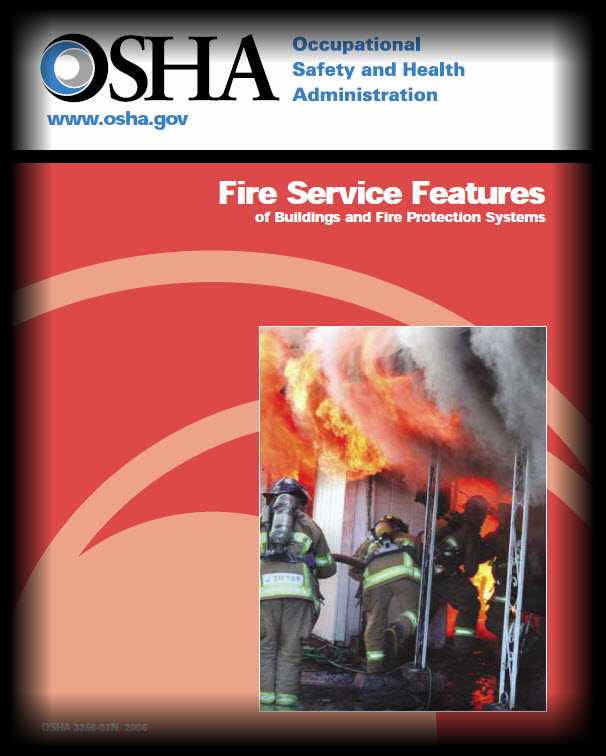Fire Service Features of Buildings and Fire Protection Systems
By Christopher J. Naum, SFPE on Dec 22, 2010 with Comments 0
Fire Service Features of Buildings and Fire Protection Systems
Fire Service Features of Buildings and Fire Protection Systems is a very useful manual that was developed and published by the Occupational Safety and Health Administration, U.S. Department of Labor for the purpose to increase the safety of building occupants and emergency responders by streamlining fire service interaction with building features and fire protection systems.
The information in this manual will assist designers of buildings and fire protection systems to better understand the needs of the fire service when they are called upon to operate in or near the built environment and provide fire service personnel with a greater degree of understanding and be able to interface with governmental and design professionals for improved fire protection features and arrangements.
To put this another way, architects and engineers create workplaces for firefighters. Designs can be tailored to better meet operational needs, thereby reducing the time it takes to mitigate an incident. The guidance in this manual is expected to decrease the injuries to responding and operating fire service personnel. When an incident can be mitigated faster, there is less time for the hazardous situation to grow in proportion. With less potential exposure, employees occupying buildings will be afforded greater protection from fire incidents.
Employee occupants as well as fire service employees will realize the benefits of this manual in terms of safe working conditions as intended by the Occupational Safety and Health Act of 1970. The codes and standards governing buildings and fire protection systems are well understood by designers. However, many portions of these codes and standards allow design variations or contain only general performance language. The resulting flexibility permits the selection of different design options. Some of these options may facilitate fire service operations better than others.
The particular needs and requirements of the fire service are typically not known thoroughly by persons not associated with these operations. This manual discusses how the fire service interacts with different building features and it suggests methods for streamlining such interaction. To provide the most effective protection, fire service personnel should be considered as users of building features and fire protection systems. While far less frequent than mechanical events or other failures, fire can cause greater destruction in terms of property loss, disruption of operations, injury, and death.
Designers routinely consider the needs and comfort of building occupants when arranging a building’s layout and systems. Within the framework of codes and standards, design options may be exercised to benefit a particular owner, tenant, or user. For example, a building code would typically dictate the minimum number of lavatories and water fountains. However, the location, distribution, and types of such facilities are left to the designer in consultation with the client.
The application of fire protection features in buildings is similar. For instance, a fire code may require the installation of a fire department connection for a sprinkler system or an annunciator for a fire alarm system. However, there may be little or no guidance as to the location, position, features, or marking of such devices. This manual provides this type of guidance to designers. However, specific local requirements or preferences may differ. Input should always be obtained from local code officials and the fire service organization, the “client” in this case.
This manual is to be used voluntarily, as a companion to mandatory and advisory provisions in building codes, life safety codes, fire codes, safety regulations, and installation standards for fire protection systems. The material contained in this document focuses on ways that safety of building occupantsdesigners can contribute to the efficiency of fire suppression operations. This material is applicable to all fire service organizations, including fire brigades and fire departments.
Filed Under: Anatomy of Buildings • Fire Protection Engineering • General Miscellaneous • Protective Systems • Research Hub
























